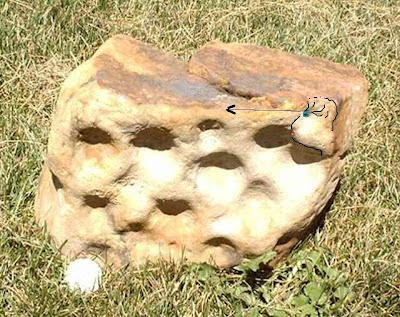Ronda Eldridge's human crafted turkey head figure stone, from Bee House, Coryell County, Texas, found in the context of multiple portable rock art objects and other bird figures
At right is a flint flake from Buckeye Lake, Ohio, described in an earlier post as an intended turkey head figure.
Texas stone turkey head, side 2
A second larger skull with the "one eye open, one eye shut or missing" motif is also highlighted in the photo above.
Human skull or face on the back of the bird head appears to be smiling. This reminds me of the smiling face on the posterior of this bird figure stone found by Mark Jones, at Piney Point, Maryland.
-kbj







+cropped.jpg)
.jpg)
Combarelles-mammouth.jpg)
+cropped+2.jpg)
.jpg)
.jpg)
+cropped.jpg)
+cropped.jpg)







.JPG)




.jpg)







